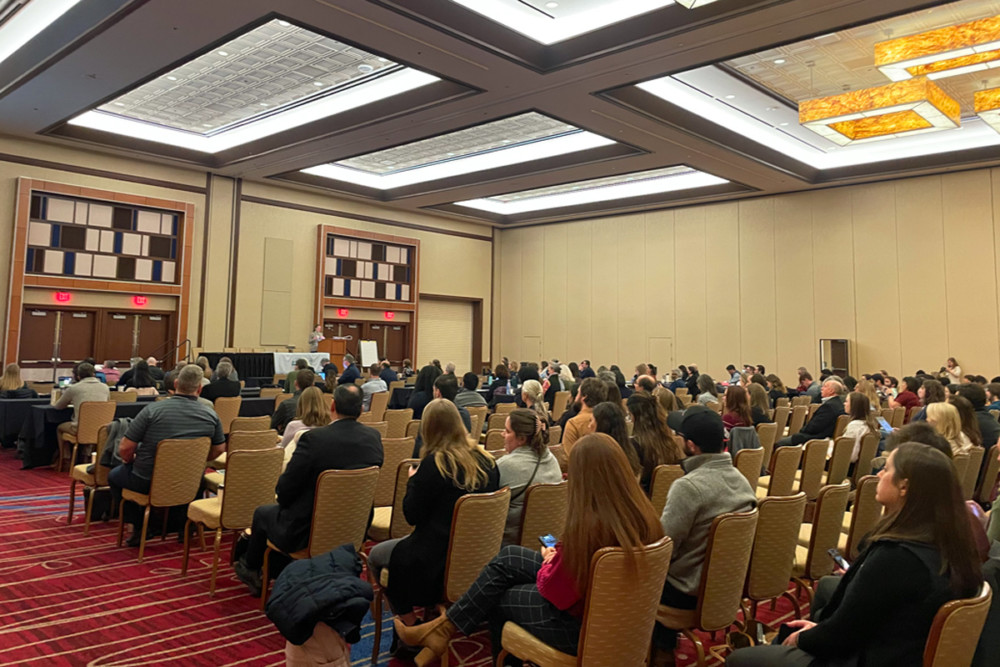
Good news for sturgeon, bad news for striped bass & sea level rise according to a new report on the Delaware Watershed.
The Delaware Estuary & Basin has a “Fair” health rating according to the latest Technical Report for the Delaware Estuary.
The Partnership for the Delaware Estuary (PDE) released its Technical Report for the Delaware Estuary and Basin (TREB) 2022 to determine the overall condition of the watershed.
Experts unpacked the newest TREB during the PDE’s 10th biennial Delaware Estuary Science & Environmental Summit in Atlantic City on Monday. The report is updated every 5 years and written for a more technical audience. With over 13 million people impacted by the Delaware Watershed, it’s important to understand its health.
Lucky for you, we distilled a few highlights. Keep reading for takeaways from the opening keynotes and report overview.
Quick TL:DR – What is the Estuary?
Estuaries are areas partially surrounded by land where rivers meet the sea. The Delaware Estuary covers the Delaware Bay and tidal reaches of the Delaware River, ranging from Trenton, New Jersey, to Cape May, New Jersey, and Cape Henlopen, Delaware.
The Delaware Estuary is the southern part of the Delaware Watershed. The Upper Basin refers to the watershed area north of the Estuary. Together, they make up the Delaware Watershed.
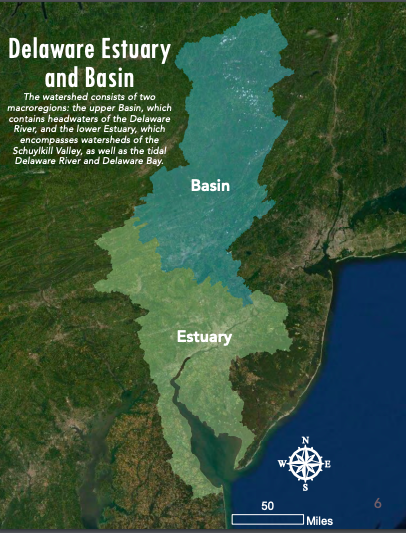
How is the Delaware Watershed (Delaware Estuary and River Basin) doing?
Overall, the results say the current health of the Delaware estuary and River Basin is “fair”, due to signs that remain optimistic along with concerns in the Estuary.
For example, sturgeon numbers are on the rise and nutrient loads have improved since the 1960s. On the other hand, the numbers of striped bass continue to decline, and sea level rise continues to increase year over year.
Saltwater is being kept at bay, and the dissolved oxygen levels are improving in the Delaware Watershed since the 1960s, which can tell us a lot about the health of aquatic life.
For our ecosystems, we want natural lands for a drainage system (like plants and green stormwater infrastructure) since more impervious pavement (ie. concrete, etc.) is worse for rivers and streams. The Delaware Watershed has had a 1.3% increase of protected lands over the past decade, making up over 2900 square miles. However, development increased by 17.5 acres per day from 1996-2016.
On the good news, 29 dams have been removed from the Delaware River Basin. On the negative side, 340 hectares of tidal wetland were lost from 1996-2016.
Wildlife like osprey, blue crab, American eel, and sturgeon populations have increased. However, striped bass, weakfish, white perch, and freshwater mussel populations have all shown signs of decline. Despite local mussel projects, a long-term decline in mussel diversity has been observed since the 1900s. In order to restore these populations, scientists should use propagation technologies and protection of existing mussel beds.
Additionally, many fish consumption advisories remain due to ecotoxins in pharmaceutical and personal care products. (Reminder: don’t flush those pharmaceuticals!)
What are the effects of climate change on the Delaware Estuary and Basin?
Sea level rise is accelerating more, according to Dr. Ray Najjar, Professor of Oceanography at Penn State University, who presented a keynote on the rapidly changing climate of the Delaware Estuary and Basin.
Over the last 120 years, Philadelphia’s sea level rise was 3.1 mm/year. Over the last 30 years, it’s been an average of 4.7 mm/year. Overall, sea levels rose between 4-6 cm per decade from 1992-2022. Along with increasing tidal range, these factors lead to more high-tide flooding, between an average of 5-10 flood days per year.
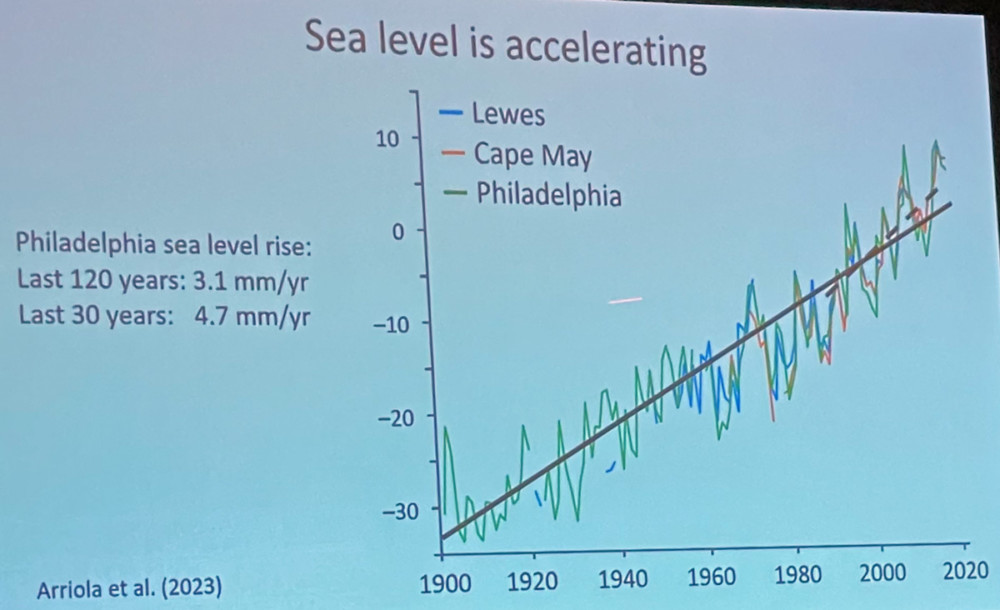
The Delaware Bay has already warmed about 2° Celsius, which means we still need to reduce emissions dramatically. Every increase in temperature leads to more adverse effects on the environment, including an increase in air temperatures and says over 90 degrees, increases in extreme precipitation and winter streamflow, increases in flooding, and a decrease in ice and snow.
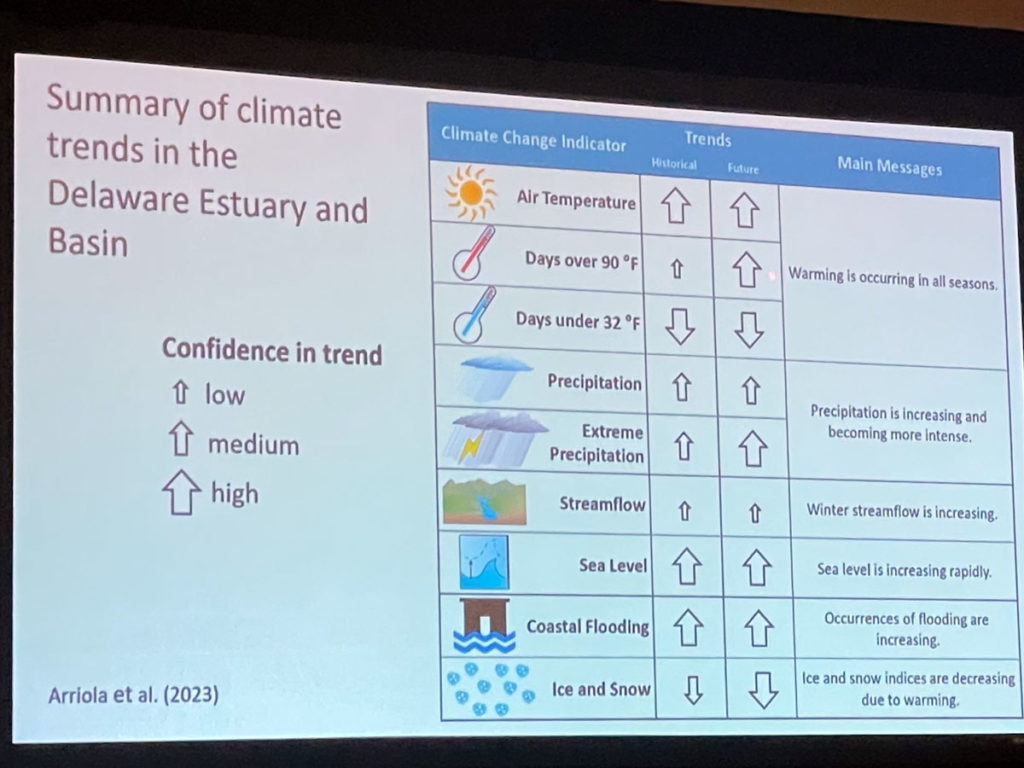
Temperatures and sea level rise isn’t the only one to fear. When there’s simultaneous precipitation (pluvial) and river (fluvial) flooding along with an ocean storm surge, it can lead to compound flooding. From 1984-2005, the compound pluvial and storm surge in the Delaware Bay occurred every 270 years (or a 100-year flood). From 2070-2100, a high carbon emissions scenario would make this compound flooding happen every 7 years, which would be a nearly 40-fold increase in frequency.
How can we lower emissions? Especially with challenges like climate deniers?
Regardless if we stopped all our emissions right now, we’d have trends continue due to previous emissions emitted into the atmosphere.
But there’s room to hope. Remember that ozone layer that is now in recovery? And how the Clean Air Act has improved our overall US air quality? We may even be close to peak carbon emissions.
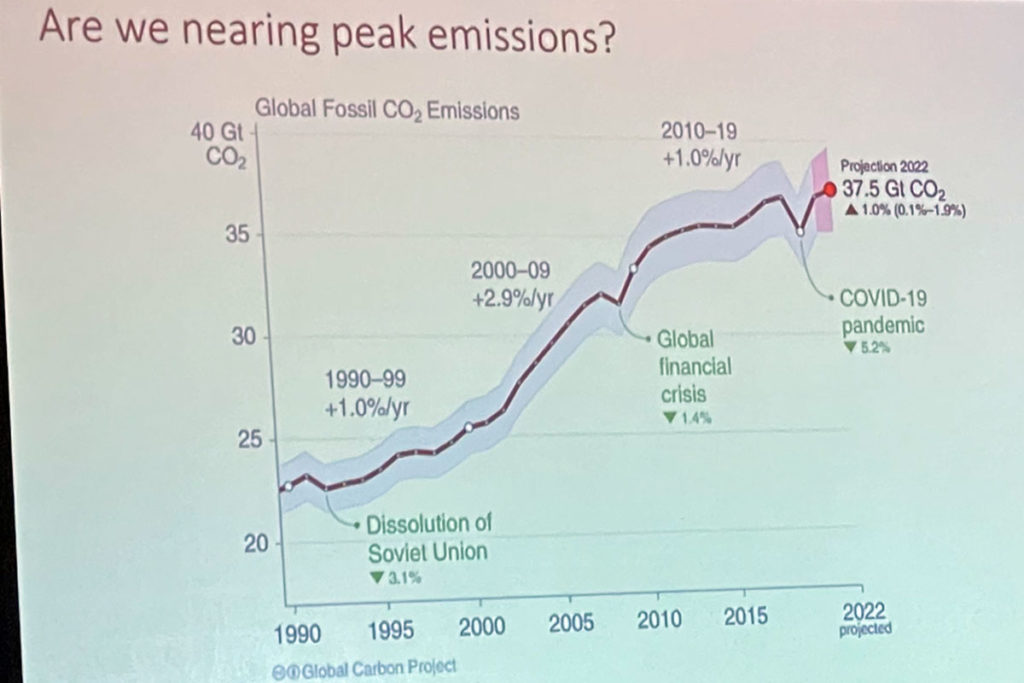
Good news for the PhDs: Scientists are still among the most highly trusted professionals. They can train students to be climate science researchers and educators. For the general public, scientists can share that voting, advocating, protesting, and reducing their own carbon footprint are all ways to combat climate change.








